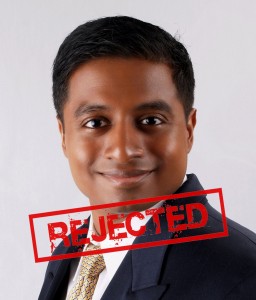
Steven Ramey’s post originally appeared on the Huffington Post Friday and is republished here.
“Christians Decline Sharply as Share of Population” is a big headline of the Pew “America’s Changing Religious Landscape” report published this week, but the data in the survey tells us more about changing ways that people respond to surveyors. Therefore, the consternation and celebration of commentators may be overstated. Both the Washington Post, which emphasized that decline of Christianity and the growth of “secular” attitudes, and the Times of India, which celebrated the increase in Hindus as Christians declined in the U.S., may be overstating the significance of the results. In contrast, the Atlantic argued against the narrative of rising secularism, asserting that the U.S. is still a predominately Christian nation and still religious, with over 70 percent of the population identifying as Christian and 44 percent of those who identified as unaffiliated asserting that religion is very or somewhat important to them. These differing assertions miss the strategic nature of identifications and the limits on what a survey can measure.
The Atlantic article emphasized the increasing number of individuals leaving the religions in which they were raised, suggesting that people are “choosing their own beliefs.” While the language of choice and freedom fits with the U.S. national identification as a land of freedom, people are not simply free to choose any religious identification that they want. The IRS and federal courts still determine what counts as a religion and thus receives tax benefits and legal protections/limitations. Efforts to claim that a strip club is a church to circumvent the rejection of their permit application and that smoking marijuana is a religious practice have been met often with skepticism. On a personal level, many perceive pressure from family and peers that can influence how they identify.
The limitations on choice are also apparent in the survey itself. The initial Pew question specifies general groups, “Are you Protestant, Roman Catholic, Mormon,
Orthodox such as Greek or Russian Orthodox, Jewish, Muslim, Buddhist, Hindu, atheist, agnostic, something else, or nothing in particular?” Overall, less than two percent of those surveyed responded with “something else.” When few vary outside of those eight broad groups and three unaffiliated categories, the limited nature of choice is apparent. Within the confines of the survey, respondents also are limited to one religion, even though some in the United States and other parts of the world identify with two or more religions, such as an Episcopalian who also identifies as Zen Buddhist. Moreover, when responses were not specific enough, such as a specific denomination for Protestants, surveyors assigned those vague denominational responses to set Protestant categories “based on their race and/or their response to a question that asked whether they would describe themselves as a ‘born-again or evangelical Christian.'” Survey respondents had to fit into the specific methodology of the survey itself and the assumptions behind it.
From the IRS to those who produce surveys, these constraints on religious identifications are typical of any identification. You can identify however you want, but if others (family, peers, employer, government) do not recognize that identification, your assertion (like a vague survey response) is not very productive. All of this highlights how any identification, including religious affiliation, is strategic, as people respond according to how they want others to perceive them and what identification best produces that perception. The strategic nature of any identification provides a different, partial explanation for the Pew survey results. The changes over time in the numbers claiming a religious affiliation should be seen as, first and foremost, a change in perception of what affiliation is socially acceptable and useful. Such a change, then, may be less about shifts in practice and belief than social perception and pressure. (Self-reports about practice or belief are also strategic and may not capture significant change in thought or practice.) Despite the media articles that the Pew report generates, the data tells us very little beyond changes in how people are willing to present themselves to anonymous surveyors. That change is itself an interesting development, but its implications are much more difficult to define than a simple reference to growth or decline of differing groups.
Photo credit: Boarded up church in Warm Springs by McD22 via Flickr (CC-BY-2.0)
 Have you heard the recent story, in the US, about musicians seeking to trademark their band’s name — The Slants — and how the US’s patent & trademark office has refused on the grounds that the term (presumed to be a reference to so-called Asian eyes) is “scandalous or immoral”?
Have you heard the recent story, in the US, about musicians seeking to trademark their band’s name — The Slants — and how the US’s patent & trademark office has refused on the grounds that the term (presumed to be a reference to so-called Asian eyes) is “scandalous or immoral”?


 I was up in Chicago the other day and when flying back home on a 9:00 am flight I noticed a woman, seated on a stool at one of those bars located alongside the boarding gate, with a plastic cup with reddish liquid in it and a straw. She’d walked by me, while I was seated at the gate, a few minutes before and stood out for me because, by the look of her face, I judged her probably to be rather younger than she seemed, maybe having lived a hard life, making her 40 or so years look 60 or more. So I guess seeing her seated at the bar, three hours before noon, confirmed a quick judgment I’d already formed based on how she appeared.
I was up in Chicago the other day and when flying back home on a 9:00 am flight I noticed a woman, seated on a stool at one of those bars located alongside the boarding gate, with a plastic cup with reddish liquid in it and a straw. She’d walked by me, while I was seated at the gate, a few minutes before and stood out for me because, by the look of her face, I judged her probably to be rather younger than she seemed, maybe having lived a hard life, making her 40 or so years look 60 or more. So I guess seeing her seated at the bar, three hours before noon, confirmed a quick judgment I’d already formed based on how she appeared. The fear over what is now regularly termed Islamic radicalization is much in the news these days, what with so-called
The fear over what is now regularly termed Islamic radicalization is much in the news these days, what with so-called  While driving back from a rainy Sunday morning walk with my dog I recently caught an interview on the radio with
While driving back from a rainy Sunday morning walk with my dog I recently caught an interview on the radio with 

 In the final scene of Barry Levinson’s 1990 film, “
In the final scene of Barry Levinson’s 1990 film, “ When discussions of identification and labels note the complexity of labels and complicate the “strong cultural associations” that such labels often convey, I feel like cheering. So I was excited when my brother sent me a link to a nuanced NPR blogpost,
When discussions of identification and labels note the complexity of labels and complicate the “strong cultural associations” that such labels often convey, I feel like cheering. So I was excited when my brother sent me a link to a nuanced NPR blogpost,